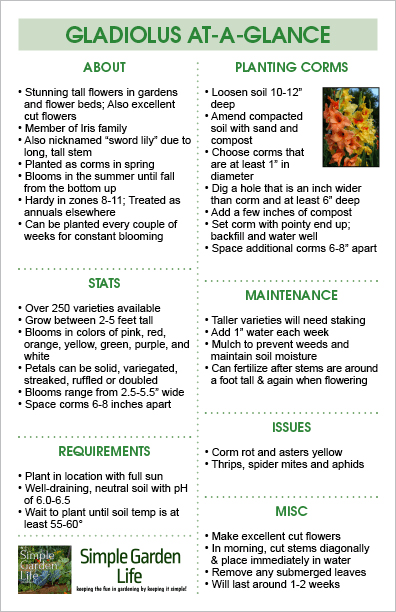Have you ever considered growing gladiolus in your flowerbeds? With their striking tall stems and multiple colorful blooms, gladiolus flowers are a great addition to any landscape – and to flower displays, too!
Gladiolus is a great option if you are lacking space but still want to add a splash of soaring color to your flowerbeds. You can even plant multiple gladioli in a container to display on porches and decks.
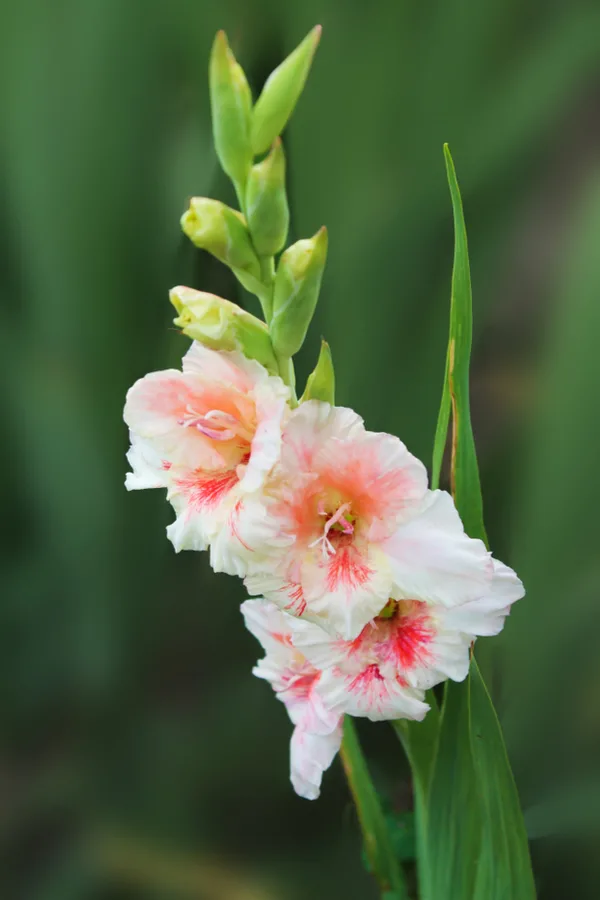
Grown in groups, they can really create quite a statement. Due to their tall height, gladiolus is a perfect addition to flowerbeds when planted behind shorter summer-blooming flowers like geraniums, impatiens, and wave petunias.
Gladiolus flowers are hardy in growing zones 7 -11. (You can find your growing zone Here.) They can grow in colder zones, but you will need to dig the bulbs (corms) and shelter indoors before the colder weather hits.
With a little care and attention and staggered planting, you can enjoy these fast-growing flowers from June until your first frost.
Other Interesting Facts About Gladioli
Similar to crocuses, gladioli grow from corms and are members of the iris family. However, unlike crocus corms which are planted in the fall and bloom in the early spring, gladioli are planted in the spring and bloom in the summer.
Not only do gladiolus make for stunning displays in your garden and flowerbeds, they also make amazing cut flowers as well. You will often see gladioli grouped together in vase displays as well as paired with other floral arrangements.
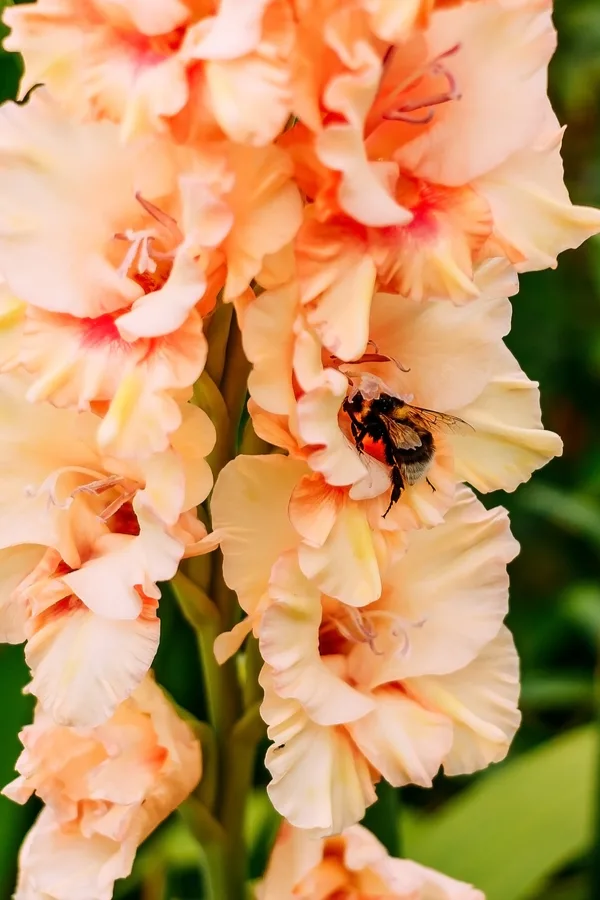
Varieties of Gladioli – How To Grow Gladiolus Flowers
There are over 250 different species of gladiolus varieties. Miniature varieties only grow to a height of around two feet while taller varieties can grow up to five feet tall. Taller varieties will need to have support as they have a tendency to bend.
Gladioli feature long, tall non-branching stems and multiple trumpet-shaped blooms. The blooms open from the bottom up, much like snapdragons.
Depending on the variety, they each have between one to nine narrow leaves. These leaves resemble long swords. Because of this feature, they are often given the name “sword lily.”
Bloom colors cover almost every range of the rainbow and beyond. You can find gladioli in hues of pink, red, orange, yellow, green, purple, and white.
In addition, the petals can be solid, have multiple colors, streaked, ruffled, or even doubled. The blooms can range in size from 2.5 inches wide to around 5.5 inches wide.
How To Plant, Grow, And Maintain Gladiolus Flowers
Soil Requirements for Gladioli
Gladiolus plants prefer soil that is well draining and full of organic matter. You will want to consider amending heavier soils such as clay that are prone to compaction. Before planting, add a decent amount of sand and/or compost.
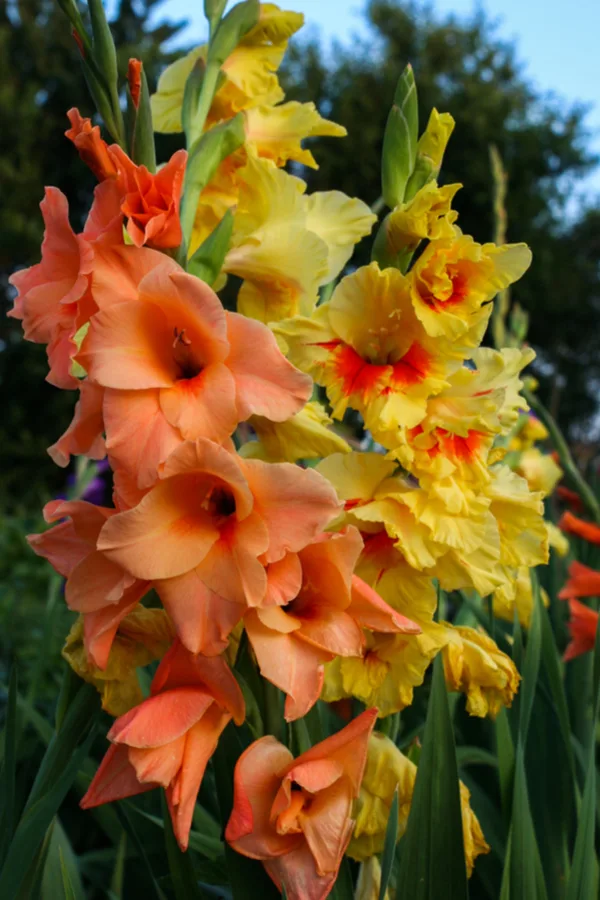
Soil should be slightly acidic to neutral with a pH of around 6.0 to 6.5. However, the most important aspect of the soil is that it needs to drain well. Gladiolus corns are prone to rot if the soil is constantly damp.
You can plant gladioli corms about two weeks before your last spring frost date. Ensure that the soil is at least 55-60º Fahrenheit (13 to 16º Celsius) prior to planting.
Planting Gladiolus
You can plant gladiolus bulbs every couple of weeks until early summer to extend your blooming season if preferred. Also, be sure to check your specific plant variety’s blooming period. Most varieties take between 60 to 90 days to grow before blooming.
Choose a location that receives full sun (at least 6 to 8 hours a day). Gladiolus flowers will still bloom in partial shade, but you will get better results in full sun.
Loosen up your soil about 10 to 12 inches deep around your planting location. Amend dense soil with plenty of compost and/or sand. For all soil types, add in a few inches of compost into your hole prior to planting corms.
Choose gladioli corms that are at least an inch or more in diameter for best success with growing and blooming. Dig a hole that is about an inch wider than your corm and at least 6 inches deep. Add a couple inches of compost.
Place a corm into the hole with the pointy end facing up and the flatter ends down into the soil. Back fill with soil and water well. Space additional corms about 6 to 8 inches apart.
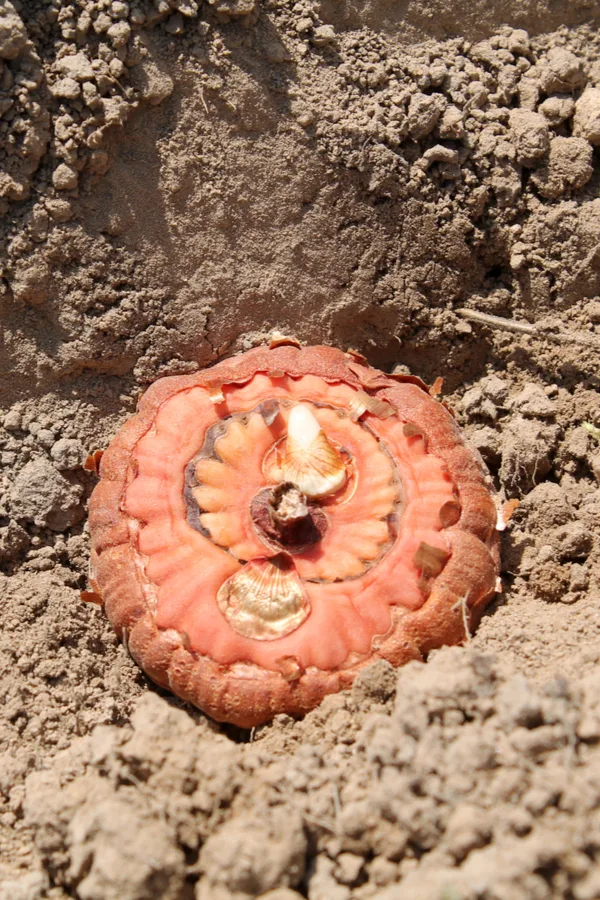
Staking
With taller varieties, you will need to add some sort of support for the tall stems. Strong winds and harsh rains can bend and deform the flowers if they don’t have adequate support.
You can use anything from bamboo shoots to plant cages, and fencing or fence lines. Add your supports right after planting the corms, being sure not to damage them during insertion. Once the flower stalk starts to grow, loosely tie the stem to your support. You will likely need to adjust the ties as the gladiolus grows.
Long-Term Care – How To Grow and Maintain Gladiolus
Watering
After your initial soaking, you will want to water your gladioli about once a week. Gladiolus corms do not handle overly wet soil well and can easily rot, so water carefully.
Aim for giving gladiolus plants around one inch of water each week. Take rainfall into consideration as well. If experiencing extremely hot spells, you may need to increase watering frequency.
Mulch
To prevent weeds and to help the soil retain moisture, add a few inches of natural mulch around the gladiolus plants. Straw, shredded leaves, and grass clipping all make for excellent mulch.
Fertilizing
Along with the compost you initially added to the soil, you can add an all-natural liquid fertilizer after the plants are around a foot tall. Fertilize once more when the gladioli begin to flower.
You can also use compost tea to help boost the nutrient value of the soil around your gladioli. To learn more about making compost tea, check out this podcast all about “How To Make and Use Compost Tea – The Best Natural Fertilizer“.
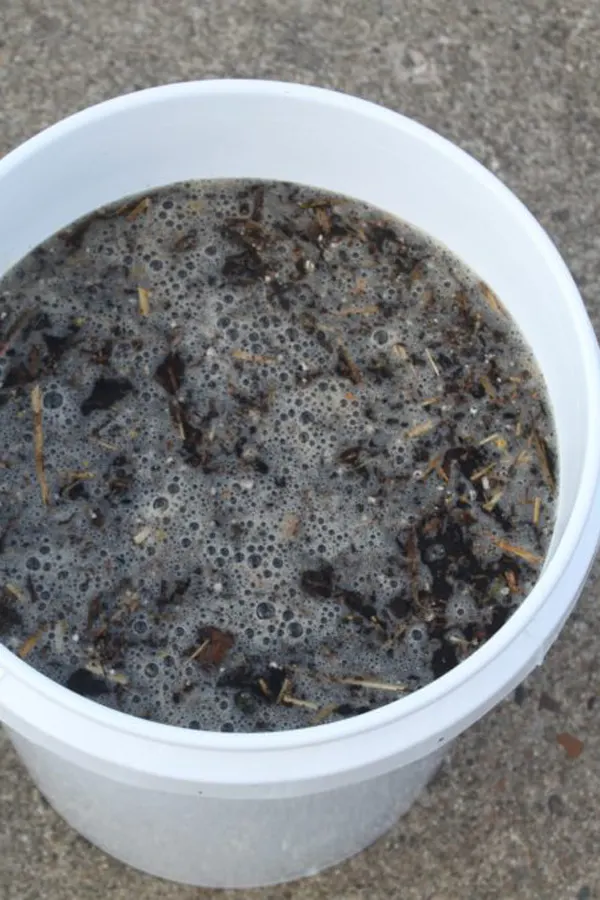
Pruning
Gladiolus flowers do not require pruning since the flowers only grow along the main stem. You may wish to pinch off the spent blooms, but it is not needed.
You will want to deadhead the spent stem after the blooms have all died off. This helps to prevent the gladiolus from going to seed. Unless you are planning on storing the corms for next year, use a sharp pair of garden shears and cut the main stem off at the soil line. (More on overwintering below.)
Pests & Issues
To help fight against disease, ensure that you are choosing healthy and strong corms that are not soft and damaged.
Along with corm rot from overwatering, thrips can be an issue for gladioli as well. Thrips are small insects that feed on the blooms and leaves of the plant. They cause discoloring and streaking to both. Use neem oil at the first sign of damage.
A less common issue with gladioli is aster yellows. Also, keep an eye out for typical plant pests like spider mites and aphids.

Cut Flowers – How To Grow and Maintain Gladiolus
As mentioned earlier, gladioli make for excellent cut arrangements. Cutting flowers should be done in the early morning or at night. Choose a stem that has only the few of its bottom blooms open. The rest of the buds should be closed.
Using a pair of gardening shears, cut the stem diagonally and place immediately in a bucket or pail of tepid water. Make sure to leave a few of the gladiolus leaves on the plant if you plan on overwintering corms for next year’s growth.
Remove any leaves that will be submerged in water within your vase or container. Change the container’s water often and add a cut flower food if preferred.
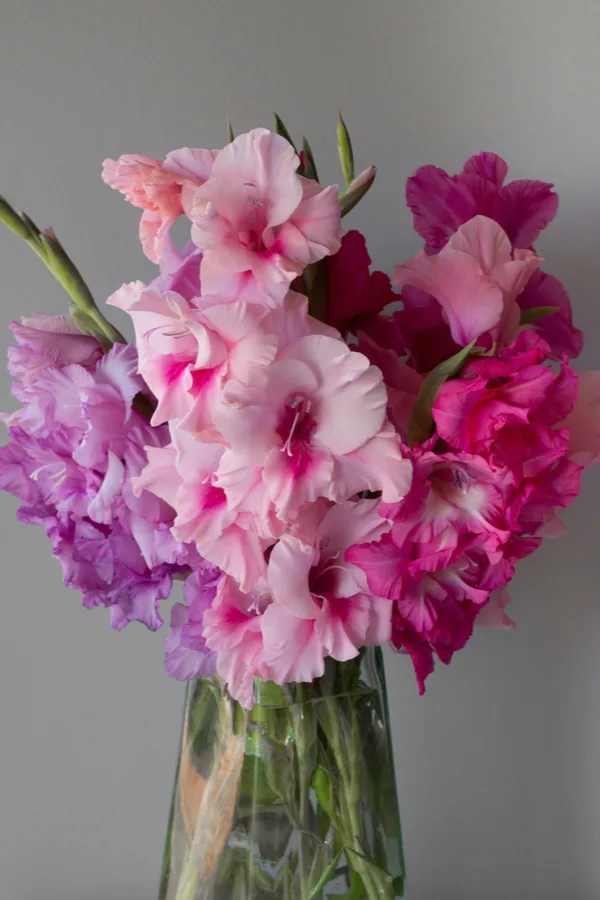
Keep cut flowers out of direct sunlight and drafty locations. You can either remove or leave spent blooms alone. Gladiolus flowers usually last around a week but can last up to two weeks under ideal conditions.
Overwintering
Gladiolus corms can be left in the ground over winter in growing zones 7 and above. These corms will come back next year.
Cut back the spent plant to the ground. During late fall, add several inches of mulch for better winter protection. Gladioli plants are typically treated as annual plants in colder growing zones. However, you can overwinter them by digging up the corms prior to your first frost.
Dry corms in a dark location for about three weeks. After dried, remove any excess soil, the roots, and any new baby cormlets that have grown out from the main corm.
Store dried corms in a dry, dark, and cool location that has plenty of airflow. Paper bags, pantyhose, onion sacks, or any other cloth bag that allows for air movement works well. Make sure not to allow the corms to freeze.
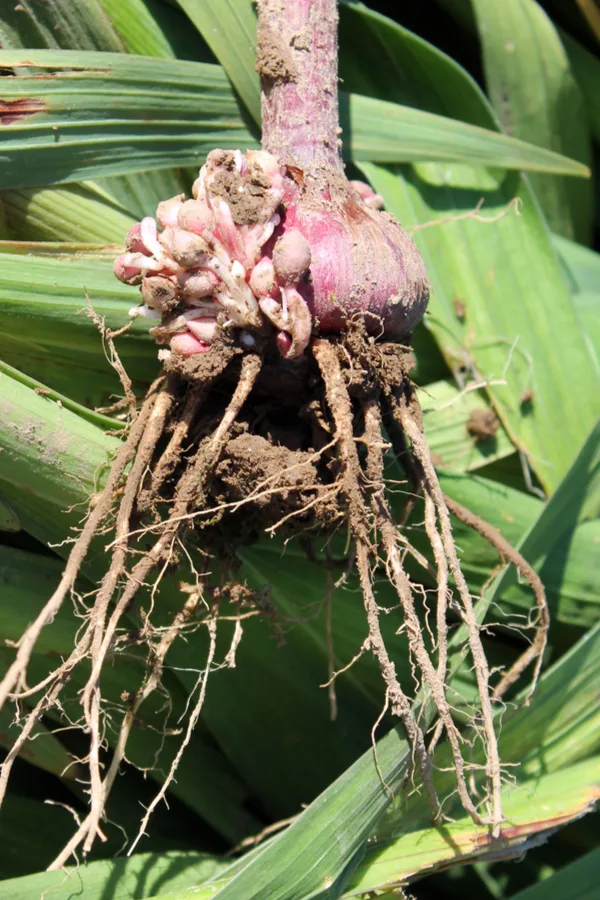
Side note: Any cormlet that is over half an inch wide can be kept to use as a new corm in the following year. Keep in mind that these smaller corms may not bloom in their first year.
To Conclude…
Not only can growing gladiolus plants make for a striking display in your garden and flowerbeds, but using them as cut flowers is also a great way to brighten up your home. Make sure to consider adding gladioli to your list of must-have flowers this year!
Feel free to download, print out, or save our Gladiolus At-A-Glance sheet. It is sized for half letter printing but can be scaled if needed. And if you’re in search of more information, check out our article: How To Get Your Gladiolus To Bloom Big This Summer – 3 Big Secrets To Huge Blooms!
Follow Our Facebook Page For Even More Great Tips! Simple Garden Life Facebook Page
Simple Garden Life is a website dedicated to keeping gardening fun, simple and enjoyable! We publish two new articles each week along with a new garden podcast episode every two weeks. This article may contain affiliate links.
